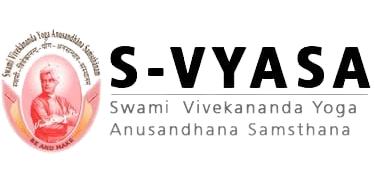Pregnancy Yoga Mathrusamraksha
Online Pregnancy Yoga

Avoid gestational Hypertension / Diabetes

Help to Induce Normal Deliveries

Happy Mothers
Pregnancy Yoga
Pregnanacy yoga modules are specially designed to reduce adverse effects of stress during pregnancy.
To manage pregnancy related discomforts and to attain positive attitude and confidence throughout the pregnancy. It also enhances the possibility of normal delivery.
Our preganancy yoga are safe and can be effectively practised since the classes are being conducted by Doctors themselves.
Appropriate points to note during Pregnancy
Pregnancy is a period when biomechanical and physiological changes occur rapidly as the body adapts to support the growing fetus.
Every woman experiences pregnancy differently and there can be a variety of physical and emotional symptoms that coincide with it.
Research shows that expectant mothers should be provided with support, tools, resources, and appropriate types and amounts of exercise during pregnancy to reduce the risk of complications and increase the chances of healthy pregnancies and deliveries.
Yoga intervention presented with lower incidences of prenatal disorders (p <_ 0.05), and small gestational age (p < 0.05) and lower levels of pain and stress (p < 0.05). Therefore it is necessary to adopt Yoga during Pregnancy for best positive results for fetal and maternal health.
Regardless of the type of yoga or specific postures used, modifications should be made according to the specific needs of the individual woman, in the prevention of overexertion, stress on the fetus, and premature labor.
Aims and objectives of Vivekananda Health Global - Antenatal Yoga
To decrease pregnancy-related complaints such as morning sickness
To reduce the complications of pregnancy
To enhance the possibility of normal labor
To increase the strength, flexibility and endurance of muscles needed for childbirth
The Integrated approach to Antenatal Yoga
Asana or Postures - Physical exercise in the form of gentle stretches and postures can be helpful in the management of stress and other associated conditions or symptoms accompanying pregnancy, such as edema, gestational hypertension or diabetes, mood instability, musculoskeletal discomfort, aches, and weight gain. Studies conclude that regular physical exercise has maternal and fetal advantages that outweigh risks and recommend at least 30 minutes of exercise, most days of the week for the prevention and treatment of conditions associated with inactivity, such as gestational diabetes and hypertension.
Pranayama or voluntary regulated breathing - It activates the parasympathetic nervous system mainly by stretching lung tissue and the vagal nerves. This leads to a physiological response characterized by a decrease in heart rate, blood pressure, Metabolic rate, and oxygen consumption. Deep breathing also increases neuroplasticity, defined as the reorganization of neural pathways as an adaptive response. Studies reveal an increase in neuroplasticity in those who perform yoga, thereby improving concentration, intelligence quotient scores, and motor control. Meditation — As a therapeutic tool, meditation will help you resolve the deepest of neuroses, fears and conflicts, which are so common during pregnancy. It decreases general anxiety, perceived stress, and pregnancy-related anxiety. Meditation brings with it an incredible awareness which helps you connect with your fetus. Meditation may be helpful for improving maternal psychological well-being and perinatal outcomes
Relaxation - Mind-body practices that cultivate general health, diminish distress, and increase self-awareness May be particularly effective in addressing both the physical and psycho-emotional aspects of pregnancy and labor Techniques such as deep relaxation and Yoga Nidra (Yogic sleep) are particularly effective during pregnancy for physical and mental relaxation. Women demonstrated reductions in psychological tension, heart rate, skin conductance, respiration, and cortisol levels, and increased respiratory sinus arrhythmia.
When to start Ante Natal Yoga?
At 12 weeks of Pregnancy
SCIENTIFIC EVIDENCE FOR THE USE OF YOGA DURING PREGNANCY
1. Effects of yoga on utero placental circulation in high risk pregnancy : A randomised controlled trial:
Rakhshani A, Nagarathna R, Mhaskar R, Mhaskar A, Thomas A, Gunasheela S.
• SVYASA University, 19 Eknath Bhavan, Gavipuram Circle, KG Nagar, Bangalore 560 019, India.
• St. John's Medical College and Hospital, Sarjapur Road, Bangalore 560 034, India.
• Gunasheela Surgical & Maternity Hospital, Building No. 1/2, Dewan Madhava Rao Road, Basavanagudi, Bangalore, Karnataka 560004, India
Results
This first randomized study of yoga in high-risk pregnancy suggest that guided yogic practices and visualization can improve the intrauterine fetal growth and the utero-fetal-placental circulation.
2. Effects of integrated yoga on quality of life and interpersonal relationships pregnant women
Rakhshani A, Maharana S, Raghuram N, Nagendra HR, Venkatram P. SVYASA University, Bangalore, India.
Results
The integrated yoga is an efficacious means of improving the quality of life of pregnant women and enhancing certain aspects of their interpersonal relationships.
3. Efficacy of Yoga on Pregnancy outcome
Narendran S, Nagarathna R, Narendran V, Gunasheela S, Nagendra HR. Swami Vivekananda Yoga Anusandhana Samsthana (SVYASA), Vivekananda Yoga. Research Foundation, Bangalore, India.
Results
An integrated approach to yoga during pregnancy is safe. It improves birth weight, decreases preterm labor, and decreases IUGR either in isolation or associated with PIH, with no increased complications
[Visit here to read the paper]
Narendran S, Nagarathna R, Gunasheela S, Nagendra HR. Yoga Anusandhana Samsthana (SVYASA), Bangalore 560019.
Results
The occurrence of complications of pregnancy (pregnancy-induced hypertension, intrauterine growth retardation, pre-term delivery) shows lower trends in yoga group.





